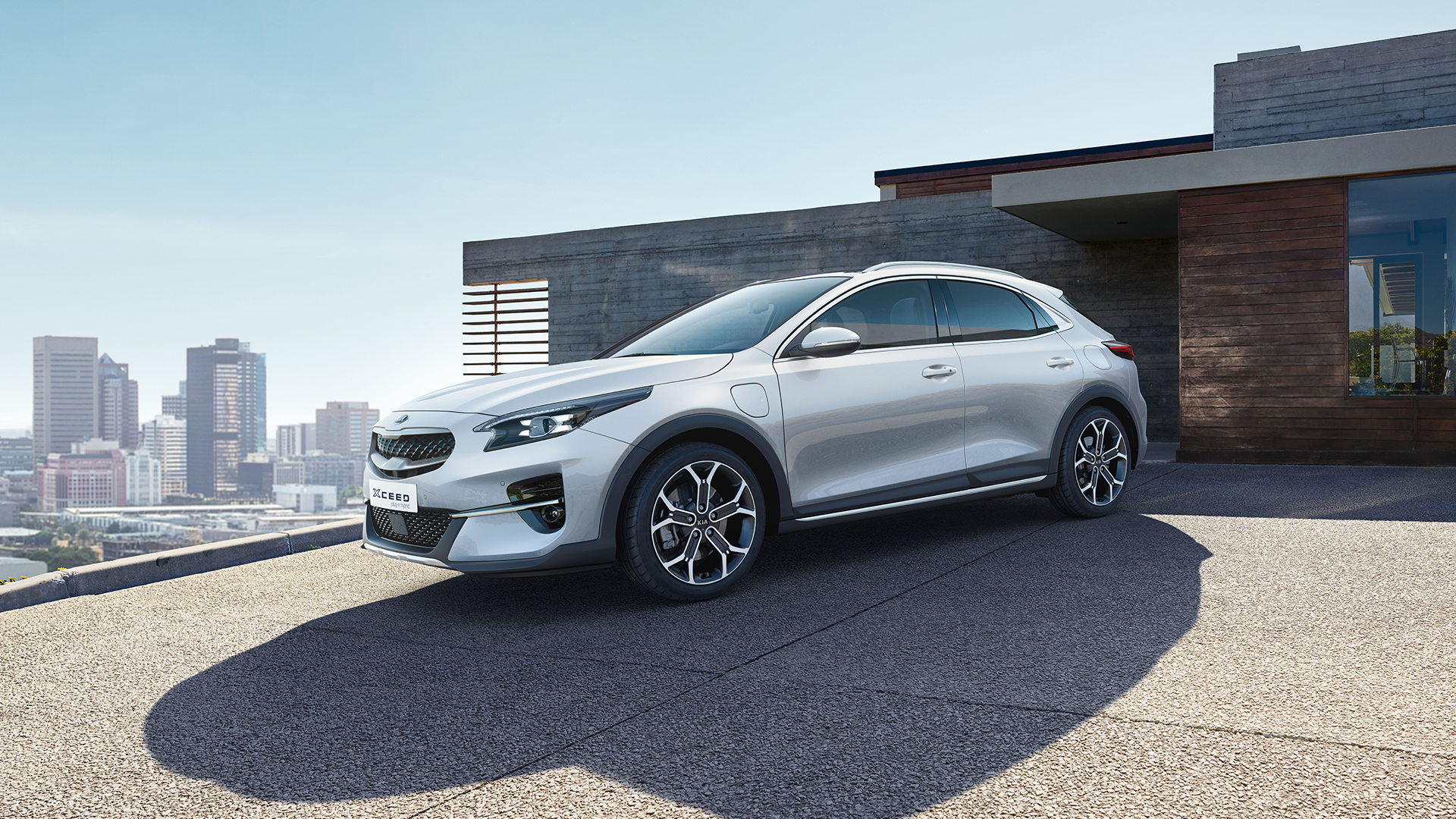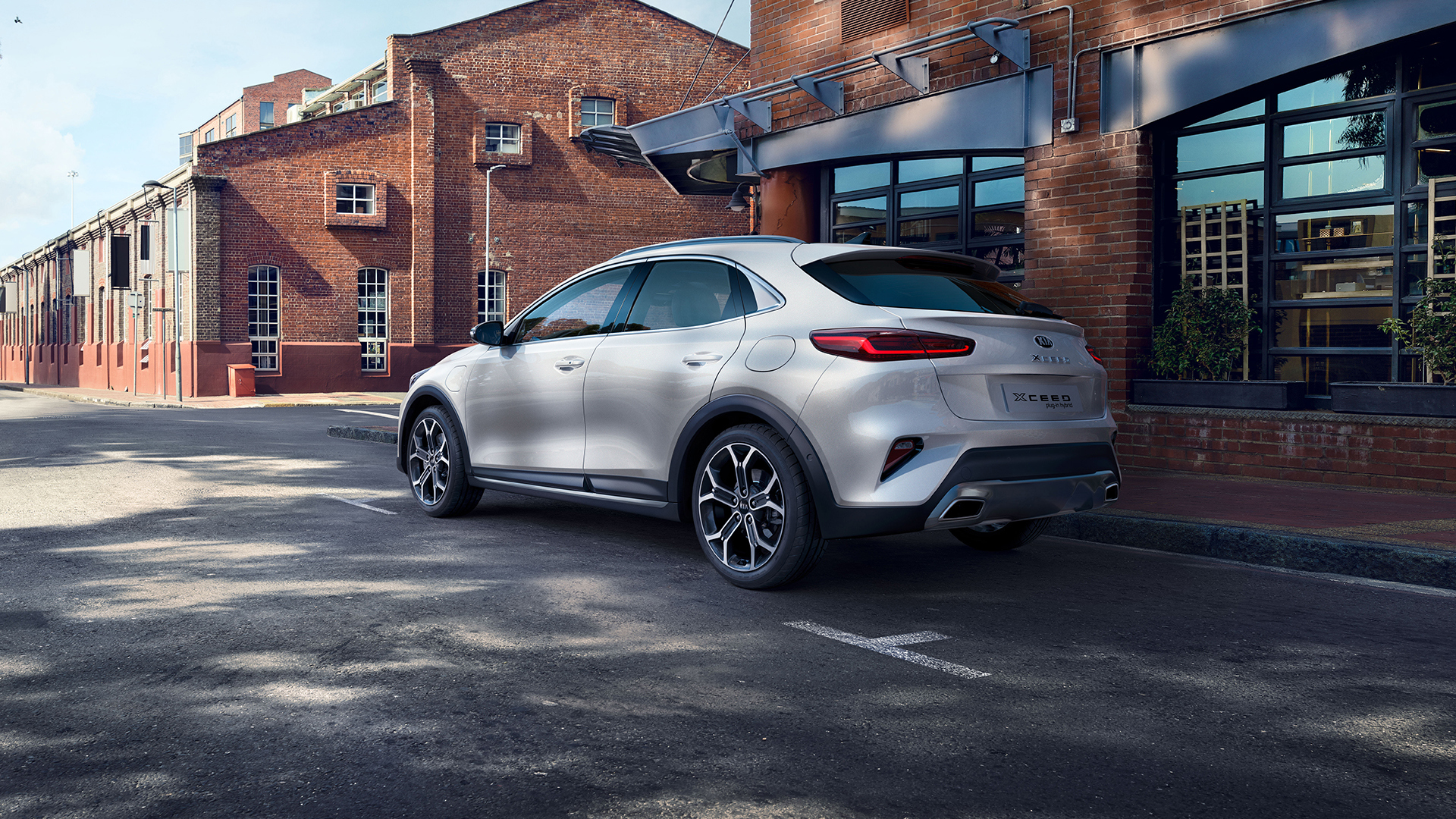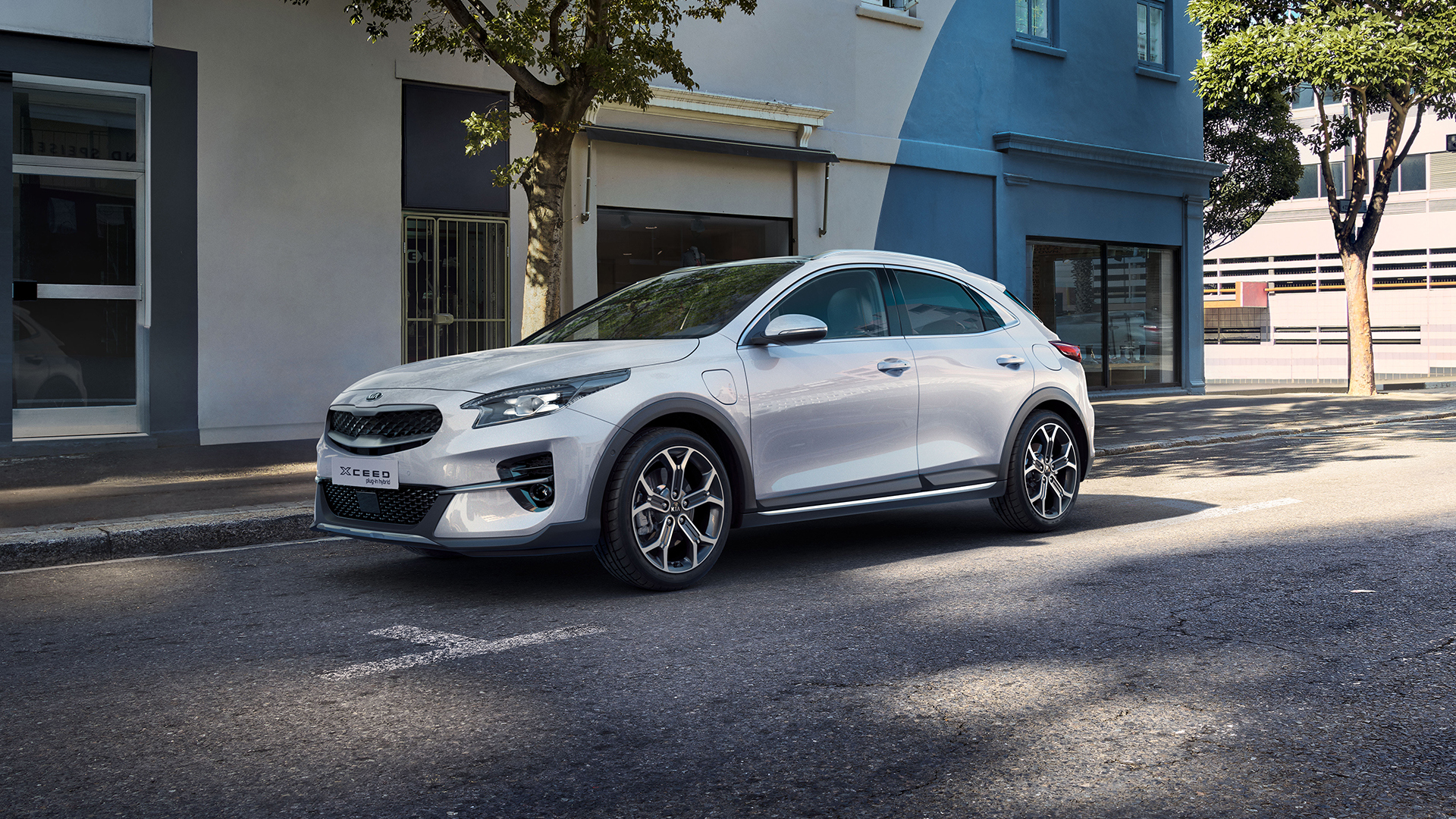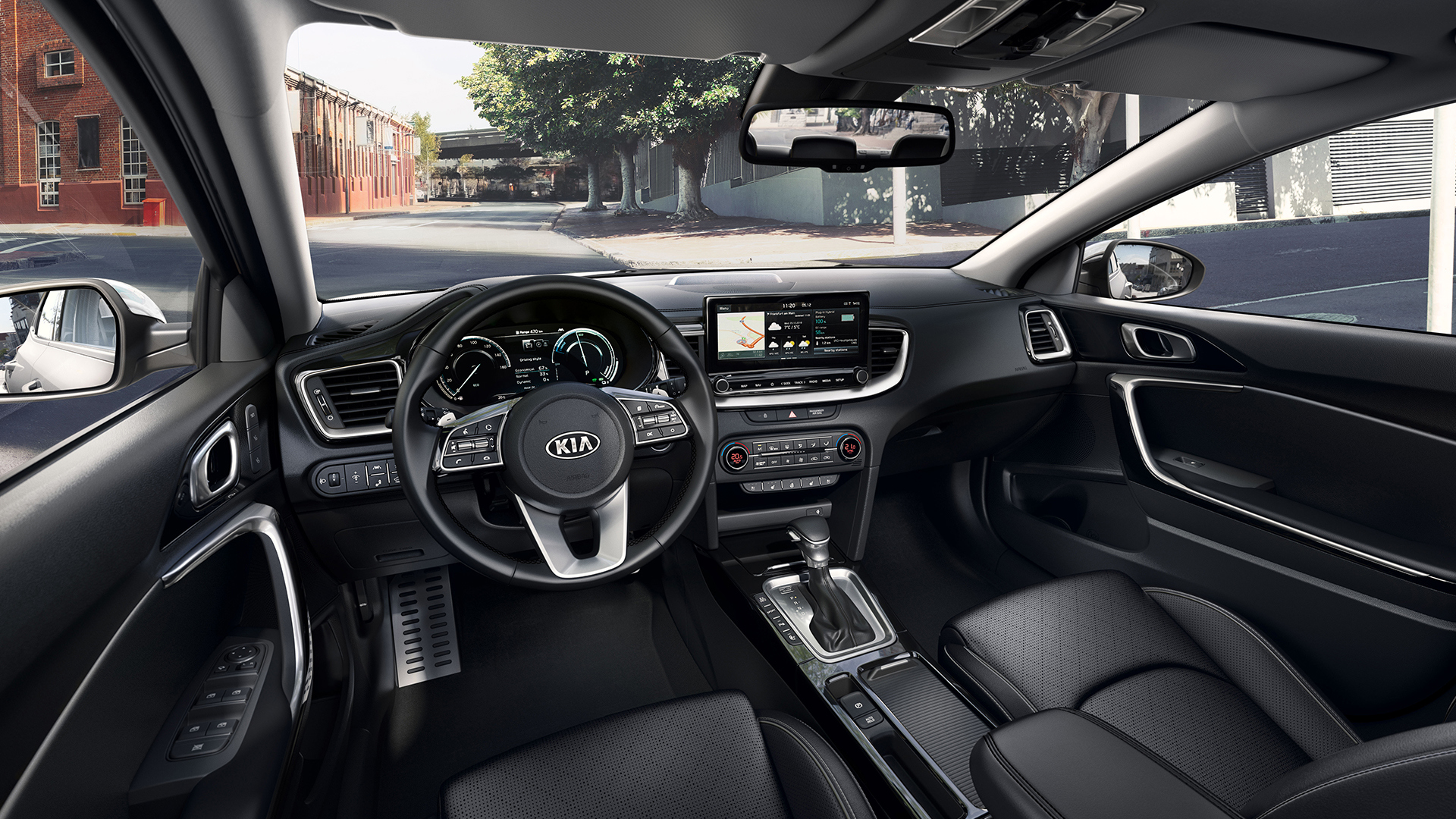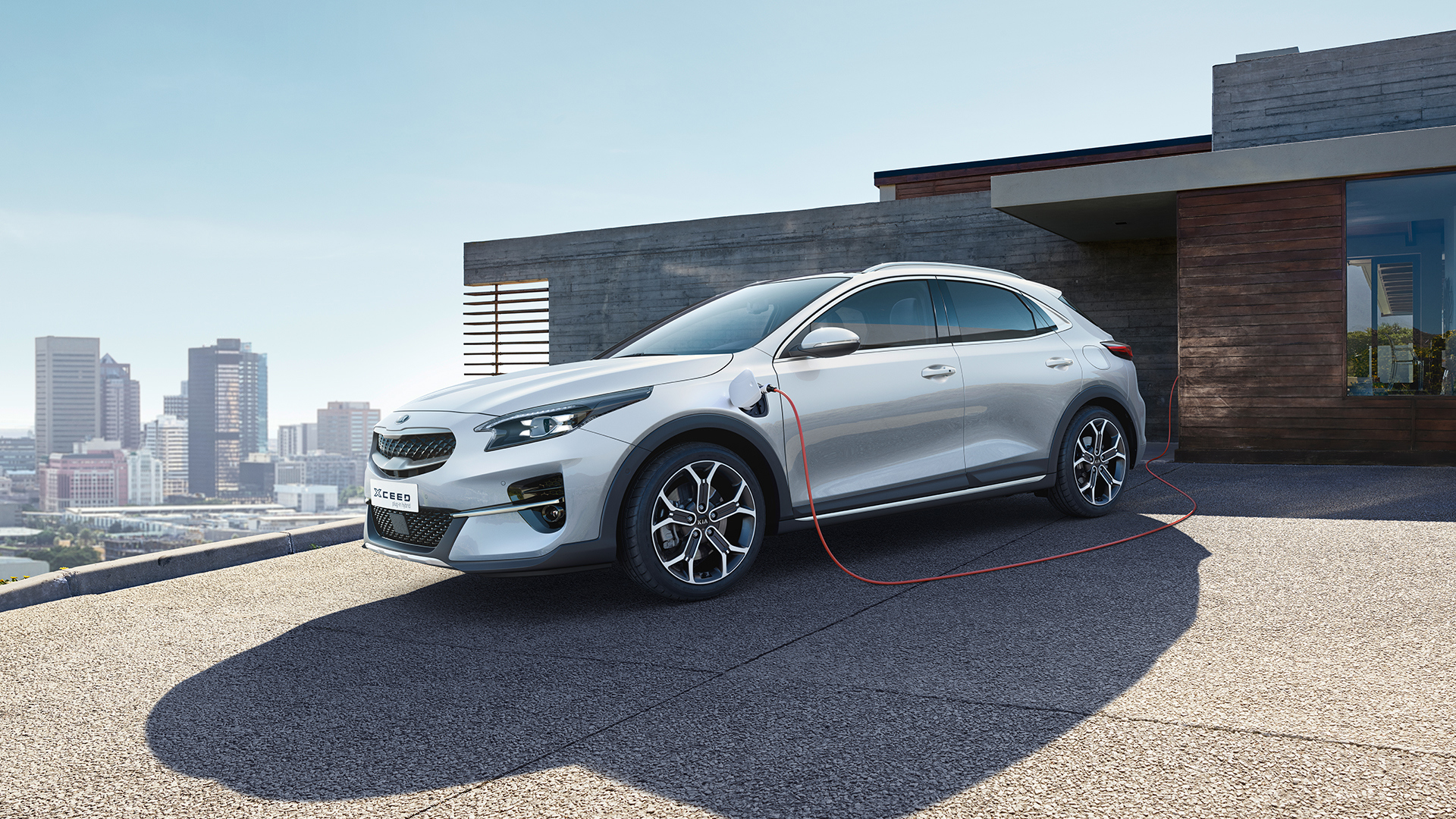Quick overview
- All trims are well equipped
- Driver comfort
- Plug-in hybrid option
- Good infotainment system
- Low-speed ride
- No more cabin space than Ceed
- Hybrid pricier to run than some rivals
- Mediocre motorway refinement
Kia has the Stonic and Sportage to take care of the SUV side of business, while the Ceed hatch and Sportswagon, and the ProCeed cover off the small family bases. Yet Kia introduced the XCeed in 2019 and refreshed it in 2022 to add a crossover to its broad line-up. It’s easy to understand when you learn the XCeed accounts for more than half of all Ceed model sales, and 10% of the company’s total sales. So, the XCeed is an important model for Kia.
It's assumed this importance because lots of people like the raised driving position and bespoke looks of the XCeed. They also lap up the car’s easy driving manner as it’s no more demanding to drive or park than a Ceed hatch, with which it shares much of its mechanical parts. However, the XCeed does get some bespoke works, such as the hydraulic bump stops for its suspension and the front and rear underplates that are as much for show as any off-road ability.
The update in 2022 brought in a simple range for the XCeed customer to pick from, with one 158hp 1.5-litre turbo petrol engine for most trim levels. Then there is the standalone plug-in hybrid PHEV model with its 139hp from its combined 1.6-litre petrol engine and electric motor. Both versions of the XCeed drive well, but the turbo petrol is only offered with a six-speed manual gearbox, so if you want an automatic transmission you have to pay the extra for the hybrid.
Kia has also done away with the smaller 1.0-litre petrol engine option, so prices of the XCeed have risen from their previous lower entry-point that was on a par with the likes of the Skoda Kamiq or Nissan Qashqai. Now, the XCeed is more likely to be compared with a Skoda Karoq or Ford Puma.
Prices
With the 1.5-litre petrol-only Kia XCeed, the range gets off the mark with the 2 trim, which costs from £22,995. You then move to the 3 trim at £25,495, so that’s a significant £2500 step up. To have the GT-Line S model instead, you have an even greater jump as it comes in at £4500 more with a price tag of £29,995. However, that’s still not the priciest Kia XCeed as the 1.6 Plug-In Hybrid DCT costs from £32,595 and only comes in 3 trim, so you don’t even get all of the goodies that are standard with the GT-Line S. For anyone looking to save a bit on the price of a new Kia XCeed, you can expect to shave as much as £3000 from the list price. If you’d rather go down the nearly new route, an XCeed can be yours with a £5000 saving for a car with around 3500 miles on the clock. A three-year old XCeed with average mileage will cost from around £15,000.
Infotainment, comfort and practicality
There are no hurdles to getting comfortable at the wheel of the Kia XCeed. Every model comes with a height adjustable driver’s seat, which has the added luxury of electric movement in the GT-Line S trim. This model also has seat position memory, while all but the 2 trim come with electrically powered lumbar adjustment for the driver’s chair. The 2 misses out on heated front seats, too, so it’s probably better to steer your attentions towards one of the higher spec models. Take that advice and you’ll be rewarded with a heated steering wheel, dual zone air conditioning, and centre console with integrated storage box and armrest as well.
However, regardless of which XCeed model you pick, all have a very good driving position that puts the driver in line with the major controls for comfort. Vision is good in most directions, though swapping lanes on the motorway can be hindered by the thick rear pillars. When you arrive at your destination, a rear-view camera makes parking a very simple affair. This uses the infotainment’s colour touchscreen to present a clear image from the back. In the 2 trim, you get an 8.0-inch monitor for the infotainment, which seems perfectly adequate and works with Apple CarPlay and Android Auto with voice controls. However, move up to the higher trims and you get a 10.25-inch display that is one of the best you’ll encounter. Its screen can be divided into three so you can keep tabs on different menus.
In the centre of the main dials, there’s a 4.2-inch colour display to show travel and vehicle information, while in the GT-Line S this is uprated to a full digital 12.3-inch dash display. As you’d expect in a Kia, the rest of the driver’s environment has been well thought through with lots of storage in the centre console and door bins, and it’s a relief to see Kia has stuck with separate physical buttons and knobs for the heating and ventilation in the centre console.
Jump into the back seats of the XCeed through the wide-opening rear doors, and you find the same sort of space you get in the standard Ceed hatch. That’s good enough for kids, and there are two Isofix child seat mounts on the outer rear chairs, but taller adults might find things a tad cramped for their heads and knees. However, the seat base is well shaped for comfort and the middle seat’s base is not raised or blighted by ridges that undermine comfort.
Head round to the boot of the XCeed and there’s 31-litres more boot space than the Ceed hatch, though this is only in the 1.5-litre model as the plug-in hybrid cedes, ahem, some space to its batteries. As a result, the PHEV has a boot capacity of 291-litres to the petrol’s 426-litres. A flat floor that sits flush with the load sill is useful, and the rear seats are divided 60-40 to top forward and leave a long, flat boot base. In the GT-Line S, the rear seats are split 40-20-40 for a bit more versatility.
Which 2019 Kia XCeed model should you buy?
Starting with the 2 trim that is only available for cars with the 1.5-litre petrol engine, you get 16-inch alloy wheels, automatic headlights, reversing camera, cruise control, and roof rails. There’s cloth upholstery inside, air conditioning, electric windows all-round, and an 8.0-inch colour touchscreen for the infotainment. This has Apple CarPlay and Android Auto with voice control. Safety is taken care of by six airbags, lane keep and follow assist, and automatic emergency braking. The 3 trim for the 1.5 petrol has 18-inch alloys, rear privacy glass, rain-sensing wipers, and heated front seats and steering wheel. There’s faux leather upholstery, as well as an electronic parking brake in place of a traditional lever, and dual zone air conditioning. The 3 also gains the larger 10.25-inch infotainment screen with integrated sat-nav. With the hybrid model in its 3 trim, you revert to the smaller 16-inch wheels, but otherwise it has much the same equipment. For the GT-Line S model, Kia adds gloss black exterior trim details, panoramic sunroof, and leather interior. You get powered adjustment for the front seats with position memory, heated outer rear seats, and a powered tailgate. Further upgrades for the GT-Line S include a wireless charging pad for your mobile phone, eight speakers for the stereo, a 12.3-inch main dash display, and smart parking assistance.
Value for money: how much does a 2019 Kia XCeed cost to buy and run?
While the higher cost of the Kia XCeed in 1.6 Plug-In Hybrid DCT form might put some off, it makes a strong case with its economy and emissions. It can return up to a claimed 201.8mpg if you make full use of its maximum 36.6 miles of EV battery range. This combination of petrol and electric power also means carbon dioxide emissions of 32g/km, which results in low road tax and company car levies. With the 1.5 petrol model, you’re looking at combined fuel economy of 42.2mpg and 142g/km CO2 emissions, so you’ll pay first year road tax of £230 before moving to the standard rate of £165 per annum.
Verdict: Should I buy a 2019 Kia XCeed?
The Kia XCeed will appeal to anyone looking for a stylish small SUV with lots of standard equipment included in the price. This handsome crossover has more presence than a Skoda Kamiq and the interior is generously fitted out, especially in its higher trim levels. Some would say ‘so it should be’ when the prices of the XCeed are higher than some of its obvious rivals.
The prices of the XCeed are explained in part by the range now only coming with larger engines, starting with the 1.5-litre turbo petrol. The plug-in hybrid model is even more expensive, but does reward with its excellent combined economy and low emissions, which will appeal in particular to company car drivers who are conscious of their tax outgoings. However, the XCeed is not the best car in its class for ride comfort, handling or refinement.


